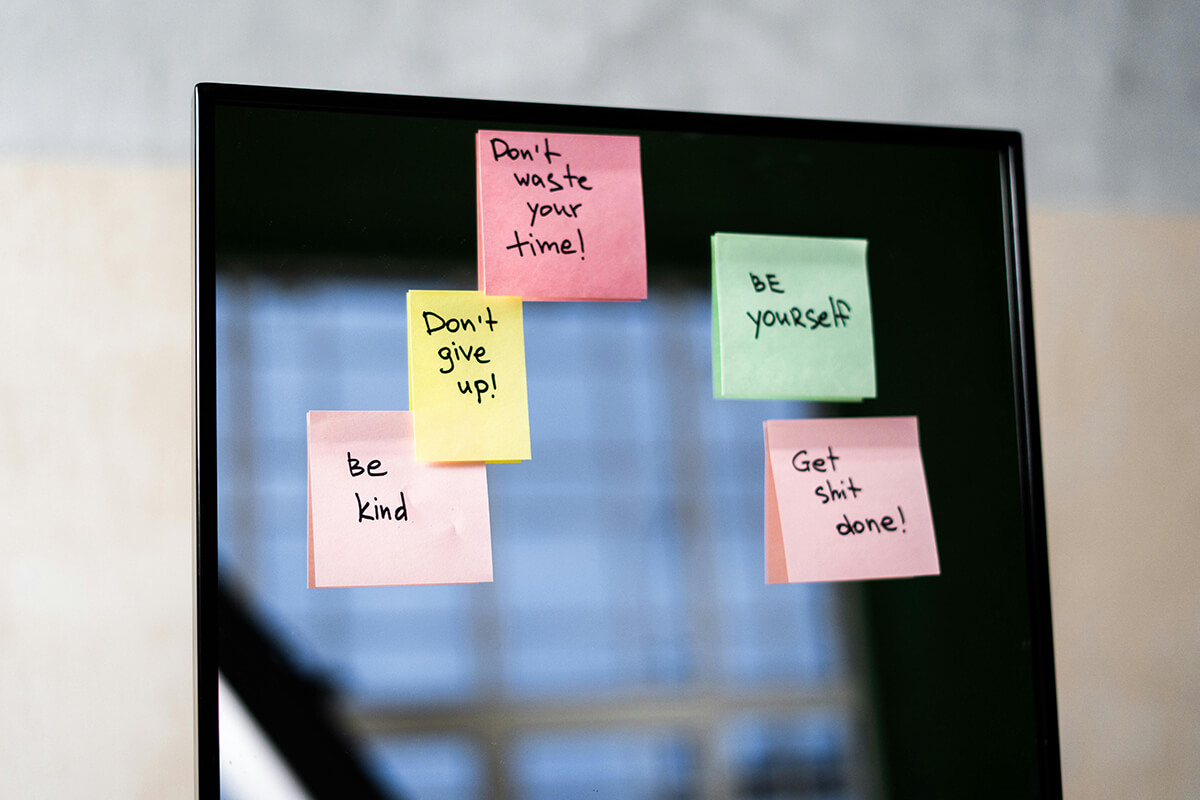Without motivation, there can be no momentum. Motivated employees provide the forward motion for strong employee performance, so it’s critical for companies to find ways to motivate employees. However, it takes more than a single initiative or program; employee motivation should be thoughtfully encouraged and deeply entwined within company culture.
This requires creating a motivational culture — which is easier said than done. To help, we’ve identified four key culture shifts that organizations can use to encourage employee motivation: support, autonomy, recognition and communication.
Why Prioritize Employee Motivation?
Motivated employees have inner drive and enthusiasm to do their best work, with a ripple effect on organizational success. Organizations with high levels of employee motivation reap big benefits, including:
- Performance: Employee motivation leads to better engagement, which translates to higher productivity and better business outcomes. Companies with highly engaged workforces show 23% higher profitability and 18% higher productivity compared to their less-engaged counterparts, according to Gallup.
- Retention: in a motivating work environment, employees are more engaged, loyal, and invested in the company’s success. They have higher levels of job satisfaction, leading to increasing retention. High engagement can improve employee retention between 18% and 43%, Gallup research shows.
- Innovation: When employees feel genuinely motivated, they bring creative energy and fresh perspectives to challenges, sparking problem-solving and innovative ideas.
- Customer satisfaction: Motivated employees deliver better customer experiences, leading to increased satisfaction and loyalty.
- Cultural transformation: When employees feel genuinely motivated, they take ownership and help motivate and mentor others in the organization in a virtuous circle.
4 Paths to Motivated Employees
Fostering employee motivation means creating an environment where team members genuinely want to contribute their best work. Long-term employee motivation involves more than perks and paychecks — it must be supported by workplace policies and culture that address fundamental human needs. To promote employee motivation, organizations must ensure that each employee has the opportunities and resources to thrive. In a motivating work environment, employees feel valued, empowered and connected to a larger purpose at work.
Support
For employee motivation to flourish, workers need to feel supported in their work, professionally and psychologically. This means organizations need to create support systems to help employees feel genuinely backed by their company. Steps to building a supportive workplace can include:
Create a Positive Work Culture
Motivation suffers when employees have to deal with a toxic environment at work. Employees should be empowered to have a healthy work life balance, feel they are treated with respect and courtesy and that collaboration is the rule, not the exception. The physical setting is important as well. The workplace should be pleasant, comfortable and conducive to productivity.
Provide Tools for Success and Remove Obstacles
Organizations that are serious about motivation invest in providing their teams with the resources they need to excel. This means not just the latest software or equipment, but ensuring that tools integrate seamlessly with existing workflows and actually make work easier, not harder. Leaders should also identify and eliminate barriers that prevent people from doing their jobs effectively. This might include streamlining approval processes, reducing bureaucratic hurdles or making team meetings more productive. Every obstacle removed is energy that can be redirected toward meaningful work.
Develop Good Managers
Managerial support is crucial for any employee; without it, they simply can’t do their best work or thrive. Good managers set clear expectations and serve as coaches, advocates and champions for their team members. They have great communication skills, understand and cultivate individual strengths, provide context for how work relates to company goals and create environments where people feel comfortable taking calculated risks and learning from failures.
Use the Power of Mentoring
Mentorship programs provide a powerful form of support, offering valuable insights and personalized guidance for mentees on the issues that are most meaningful to them. Mentorships offer safe spaces for mentees to learn, grow and question while receiving positive feedback from a mentor invested in their success — a prime way to boost motivation.
Autonomy
In a motivated workforce, employees are self-driven to take initiative and get things done. Having this kind of autonomy is also a motivating force in itself. Nothing kills motivation like micromanaging, but having leaders’ trust and the ability to make decisions makes workers feel valued and boosts employee satisfaction and engagement.
Trust Employee Expertise
Instead of dictating specific processes or monitoring every decision, managers must learn to communicate clear expectations and then step back to let their teams find the most effective paths forward. This approach respects employees’ expertise and judgment while ensuring accountability for results.
Offer Flexibility
Autonomy also means giving people meaningful choice in how they structure their work. This might involve flexible work hours, remote work options or the ability to prioritize tasks based on their understanding of what matters most. When employees have control over their work environment and processes, they develop stronger ownership of outcomes and build better work life balance.
Provide growth opportunities
Autonomy includes offering employees the chance to expand their skills and take on new challenges. This means offering stretch assignments, cross-functional projects, or leadership opportunities that spur professional growth. When team members see a clear career path and have the freedom to pursue it, they become more invested in their work and the company’s success.
Recognition
Recognition is one of the most important ways to motivate employees. Rewarding employees goes beyond generic praise and traditional bonuses to create meaningful experiences that make individual employees feel valued and spark employee engagement, loyalty and drive. Effective recognition is specific, timely and connects individual contributions to broader organizational values and goals. Recognition doesn’t always have to be formal or come from leaders. In a positive work culture, appreciation and recognition flow naturally throughout the organization, not just from managers to employees, but peer-to-peer as well.
Ideas for recognition include:
- Personalized awards recognizing individual achievements or characteristics
- Thank-you notes
- Everyday verbal praise and thanks
- Celebrating professional milestones such as work anniversaries or project completions
- Celebrating individual milestones such as birthdays
- Salary raises
- Promotions
- Benefit enhancements
Communication
Open communication is crucial for motivation. Without it, employees won’t understand what success looks like, the impact they have on the organization or how they can achieve professional growth. Good communication skills and policies need to be intentionally cultivated throughout the organization.
Practice Transparency
Transparency forms the foundation of trust. When leaders share context about business decisions and strategic direction with open communication, employees can make better decisions. Transparency includes honest communication about challenges, setbacks and difficult decisions, especially during times of change. This acknowledges employee concerns, helping workers feel involved and motivating them to contribute ideas.
Leverage Storytelling
Effective organizational communication goes beyond data and directives to include storytelling that connects employees to purpose. When leaders share stories about how individual contributions impact customers, communities or the company’s broader mission, employees develop a deeper emotional connection to their work. This narrative approach helps employees see their role in the larger story of organizational success, fostering employee engagement and intrinsic motivation that extends beyond external rewards.
Create Ongoing Feedback Loops
Ongoing constructive feedback helps employees understand their impact and identify areas for growth. Effective feedback systems and regular check-ins create ongoing dialogue that go beyond annual performance reviews, allowing for improvement throughout the year. Organizations should create systems and processes that empower employees to honestly express their opinions — and then integrate those insights into decision-making. This includes feedback tools such as
- Surveys
- Open forums
- Town halls
- Suggestion boxes
- Individual check ins with managers
Employee Motivation at Large Organizations
Maintaining employee motivation becomes exponentially more challenging as organizations grow. Companies can use programs such as mentorships to help create personal connections and individualized support that might otherwise get lost.
Mentoring at Scale
Mentoring relationships help maintain the human element of work even within large corporate structures. They connect people who might not otherwise cross paths in large companies and create informal networks that help employees navigate complex organizational dynamics. Mentoring programs can be designed to pair employees across different experience levels and backgrounds to help build understanding, share knowledge and strengthen workplace culture. By fostering meaningful relationships, mentoring helps cultivate a sense of community and belonging.
A mentorship platform such as Chronus makes it easier for organizations to facilitate these meaningful connections with automated matching, while providing the structure and tools to ensure mentoring relationships thrive at scale. Chronus also offers proprietary tools designed to facilitate conversations about purpose into the workplace.
Key Mentoring Focus Areas for Motivation
Effective mentoring programs focus on practical topics that directly impact employee morale and motivation, such as:
- Goal setting: Establishing meaningful, achievable objectives that align with personal aspirations and company goals
- Career pathing: Helping mentees understand potential growth trajectories and the steps needed to achieve career advancement
- Development plans: Creating structured approaches to professional development and career growth
- Brainstorming and collaboration: Providing a sounding board to explore ideas, solve problems and think creatively about challenges
Employee Community Groups
Employee community groups such as Employee Resource Groups (ERGs) and affinity networks also play a vital role in maintaining motivation across large organizations. These voluntary, employee-led communities create spaces where people with shared identities, interests or experiences can connect and support each other, boosting employee morale and helping employees feel motivated.
How to Tell Your Employees Are Motivated
In a motivated workforce, employees are energized to contribute their talents and creativity. Rather than just going through the motions, they’re actively engaged, taking ownership of their work and finding overall job satisfaction. Motivated employees tend to show these characteristics:
- High engagement and productivity: Motivated employees are engaged with their work, taking initiative and owning outcomes. Their productivity tends to be both high and sustainable, driven by intrinsic motivation rather than external pressure.
- Collaborative: In a motivated work culture, employees become force multipliers. They actively help other employees and recognize their peers for good work. They contribute to positive team dynamics and work together to support the company’s mission.
- Strong morale: Motivated team members keep a positive attitude even during challenging periods. They approach problems with optimism and go beyond identifying issues to offer proactive solutions, while maintaining enthusiasm for their work.
- Continuous learning and growth: Motivated employees have strong personal and professional goals and actively seek growth opportunities. They ask for challenging assignments, participate in skill development and show curiosity about different aspects of the business beyond their immediate role.
- Low turnover and retention: Teams with motivated employees typically experience lower turnover rates and higher retention. Motivated employees are more likely to stay with the organization long-term and speak positively about their workplace to others.
Making a Motivational Shift with Employees
Creating a companywide culture of employee motivation takes intention and commitment. The key is understanding that employee motivation isn’t a destination, but a strategic priority that requires attention and investment. Resources such as Chronus can help organizations enhance motivation strategies by providing a platform to facilitate mentoring, deepen employee connection and build employees’ sense of purpose, all while streamlining administration and making it easy to assess results, adjust and achieve continuous improvement.



